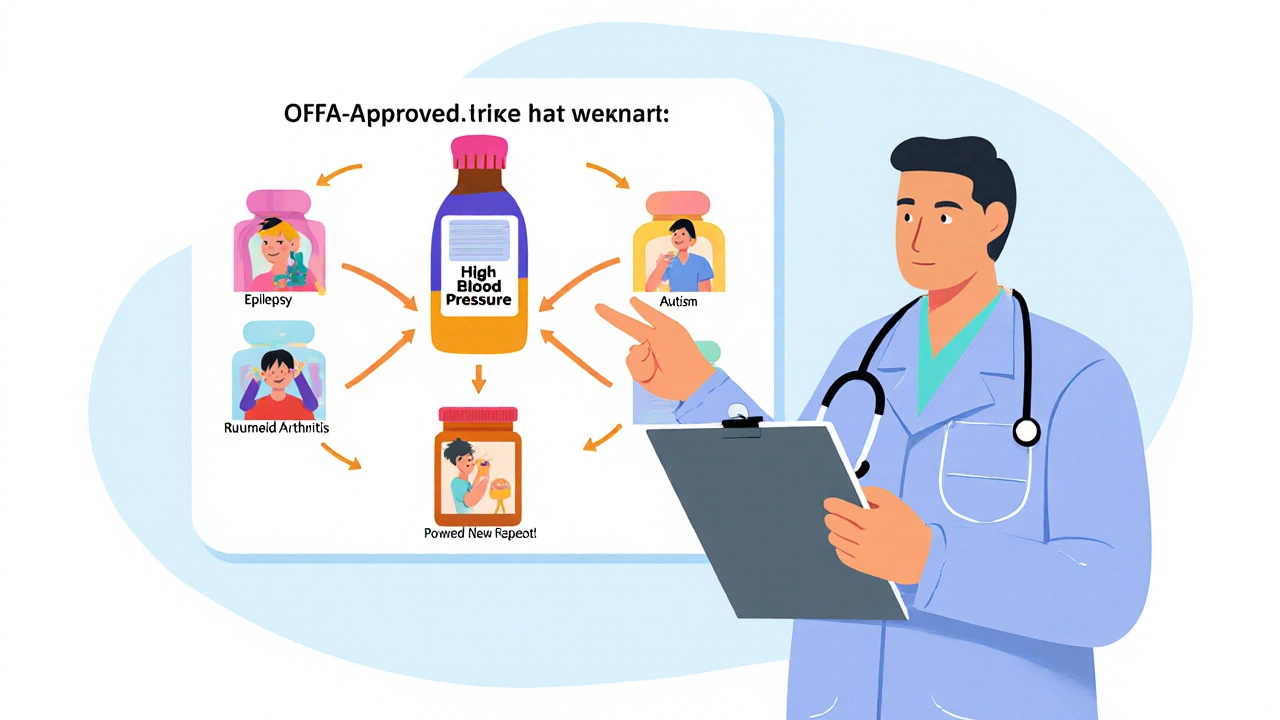Off-Label Drug Use: What It Is, Why It Happens, and What You Need to Know
When a doctor prescribes a drug for something it wasn’t originally approved for by the FDA, that’s called off-label drug use, the practice of using an approved medication for a condition, age group, or dosage not listed on its official label. It’s not illegal, and it’s not rare—in fact, about 20% of all prescriptions in the U.S. are for off-label uses. This happens because drug approval processes are slow, and doctors often see better results in practice than what clinical trials showed.
Many of the medications you’ve heard of—like topiramate, an antiseizure drug often used for migraines and weight loss—are commonly prescribed off-label. The same goes for low-dose naltrexone, a drug approved for alcohol dependence but now used for autoimmune conditions like fibromyalgia. Even antidepressants, like SSRIs used for chronic pain or insomnia, often get prescribed outside their labeled uses. These aren’t random guesses. They’re based on peer-reviewed studies, clinical experience, and sometimes, patient desperation when standard treatments fail.
But off-label doesn’t mean unsafe. It means unapproved—for that specific use. The FDA approves drugs for specific conditions based on large trials, but once a drug is on the market, doctors can use it however they think best. That’s why you’ll see statins, like simvastatin, used off-label for inflammation, even though their label only mentions cholesterol. The risk comes when patients aren’t told what they’re getting, or when there’s no solid evidence behind the choice. That’s why knowing your meds matters. If your doctor prescribes something off-label, ask: Is there research backing this? What are the side effects? Are there alternatives?
Off-label use is especially common with pediatric medications, since most drugs aren’t tested on children. A child with epilepsy might get a drug approved only for adults. A pregnant woman might be given an antidepressant not labeled safe for pregnancy. These decisions aren’t made lightly—they’re often the best option available. But they need transparency. You deserve to know if what you’re taking is being used exactly as approved, or if it’s being stretched beyond its original purpose.
What you’ll find in the posts below are real-world examples of how off-label use shows up in daily practice—from grapefruit juice making simvastatin dangerous, to compounded meds filling gaps when standard pills won’t work, to how generic substitution laws protect patients taking critical drugs like warfarin. These aren’t theoretical debates. They’re lived experiences. And if you’re taking any medication, especially one that’s been prescribed for something unusual, you need to understand the rules, risks, and realities behind it.
Off-label drug use is legal, common, and often necessary - especially in pediatrics, oncology, and psychiatry. Learn why doctors prescribe medications beyond FDA approval and how patients can navigate the risks and insurance hurdles.
Nov, 16 2025

